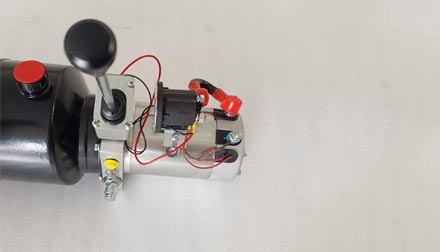Nov . 27, 2024 21:12 Back to list
Understanding Hydraulic Cylinder Forces for Enhanced Performance and Efficiency
Understanding Force in Hydraulic Cylinder Products
Hydraulic cylinders are essential components in various industrial applications, from manufacturing to construction. These devices are known for their ability to generate substantial force through the use of pressurized hydraulic fluid. The role of force in hydraulic cylinders is vital to understanding their functionality, efficiency, and effectiveness.
Fundamental Principles of Hydraulic Force
Hydraulic cylinders operate based on Pascal’s principle, which states that when pressure is applied to a confined fluid, it transmits that pressure uniformly in all directions. This principle allows hydraulic systems to amplify force, enabling them to perform heavy-duty tasks more efficiently than mechanical systems. The force generated by a hydraulic cylinder can be calculated using the formula
\[ F = P \times A \]
Where - \( F \) is the force exerted by the cylinder (in pounds or Newtons) - \( P \) is the pressure of the hydraulic fluid (in psi or Pascals) - \( A \) is the cross-sectional area of the cylinder rod or piston (in square inches or square meters)
The design of the hydraulic cylinder, including its diameter and the pressure of the hydraulic fluid, significantly influences the force it can exert. A larger diameter cylinder or increased fluid pressure results in higher force output.
Applications of Force in Hydraulic Cylinders
Hydraulic cylinders are used in an array of applications that require precise and powerful movement. In construction, for example, excavators utilize hydraulic cylinders to lift heavy loads, dig earth, and perform various tasks on a site. The immense force they can generate allows operators to move large machinery with ease.
Moreover, in manufacturing processes, hydraulic cylinders are employed in presses for metal forming, assembly line applications, and even in robotics. The ability to exert force with great precision is critical in these environments, where efficiency and accuracy are paramount.
Factors Influencing Force Output
Several factors can impact the force output of hydraulic cylinders
. These includeforce in hydraulic cylinder products

1. Hydraulic Fluid Pressure The pressure of the hydraulic fluid directly affects the overall force. Systems that can maintain high pressure without significant loss will perform optimally.
2. Cylinder Area Larger cylinder diameters produce greater force. Designers must take care to choose the appropriate size based on the application requirements.
3. Friction Losses Internal and external friction can reduce the effective force output. Proper lubrication and maintenance are essential to minimize these losses.
4. Temperature The viscosity of hydraulic fluid changes with temperature. Higher temperatures can decrease the fluid's viscosity, affecting its ability to transmit force effectively.
5. Cylinder Design The overall design, including the materials used and the method of sealing, plays a critical role in the cylinder's efficiency and force generation capabilities.
Innovations in Hydraulic Cylinder Technology
The industry has seen numerous advancements in hydraulic cylinder technology aimed at increasing the efficiency and effectiveness of force transmission. Innovations such as electronic controls and advanced materials have allowed for more precise movements and better pressure management.
Furthermore, the development of smart hydraulic systems integrates sensors and data analytics. This technology enables real-time monitoring and adjustments to pressure and performance, ensuring that hydraulic cylinders operate at optimal force output under varying conditions.
Conclusion
Understanding the force generated by hydraulic cylinders is essential for engineers, operators, and manufacturers who rely on these devices for their operations. From calculating force output to considering the various factors that influence it, a thorough comprehension of hydraulic principles ensures that hydraulic systems are designed and utilized effectively.
As industries continue to evolve and embrace technological advancements, the future of hydraulic cylinders looks promising. Enhanced capabilities and smarter systems will undoubtedly lead to even greater performance in generating the force necessary to tackle the challenges of modern engineering and manufacturing.
-
Fork Lift Power Units - Hebei Shenghan | Efficiency, Reliability
NewsJul.13,2025
-
1.5-Ton Turbocharged Cylinder-Hebei Shenghan|Hydraulic Solution,Energy Efficiency
NewsJul.13,2025
-
Auto Hoist Power Units-Hebei Shenghan|Efficiency&Industrial Lifting
NewsJul.13,2025
-
Double Acting Power Units-Hebei Shenghan|Hydraulic Solutions,Industrial Efficiency
NewsJul.13,2025
-
1.5 Ton Lifting Cylinder 70/82-40-290-535 - High-Performance Hydraulic Solution | Hebei Shenghan
NewsJul.13,2025
-
Fork Lift Power Units - Hebei Shenghan | Efficiency&Reliability
NewsJul.13,2025
